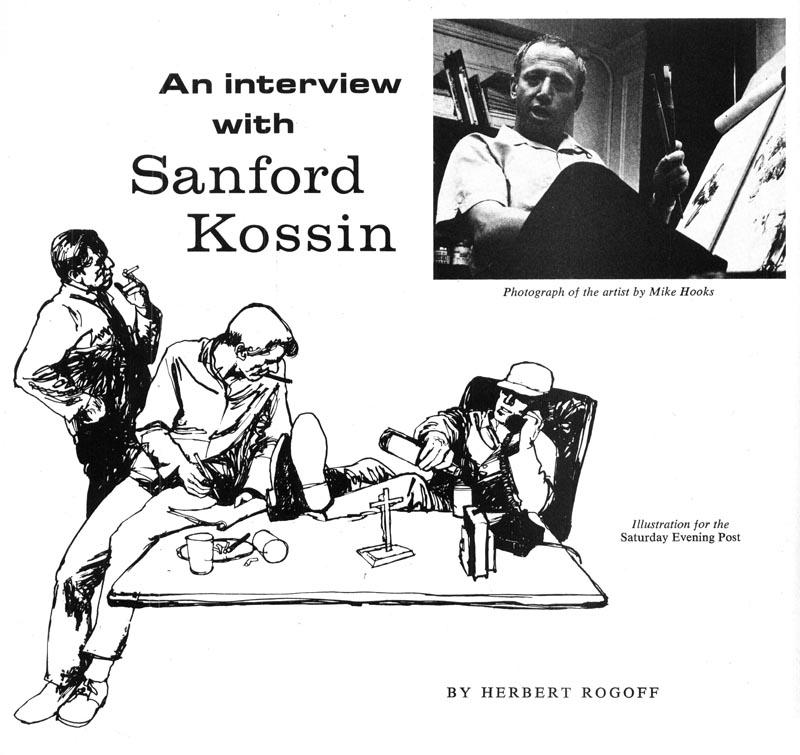
HR: Sandy, how do you go about starting an illustration?
SK: I have it fairly clear in my mind what has to be done for the picture, and then it's time to come to the board. With a graphite pencil, usually a 2B lead, on a 14 X 17 tracing pad, I begin to make situations that are both pleasing and at the same time tell the story. This, of course, is based on the thinking that I went through previously.
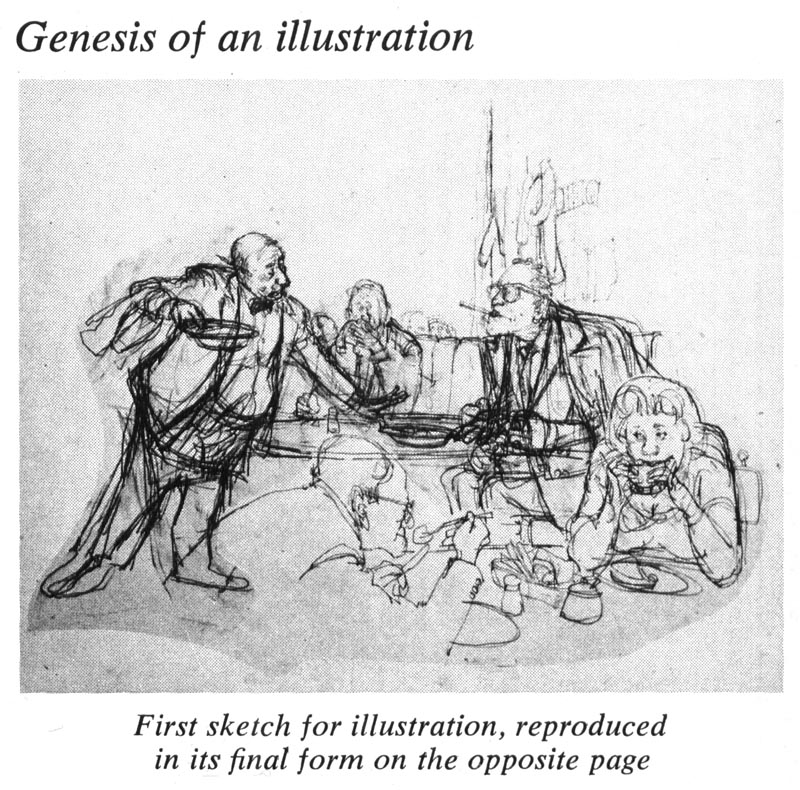
SK: The graphite is something I use when I'm doing a humorous type of drawing. I've found that charcoal - a stick of vine charcoal or some of the compressed charcoal - is a good medium for me to use when I don't want to get bogged down in detail. But I'm more concerned with putting in the composition; and the composition to me is a most important factor in telling the story.
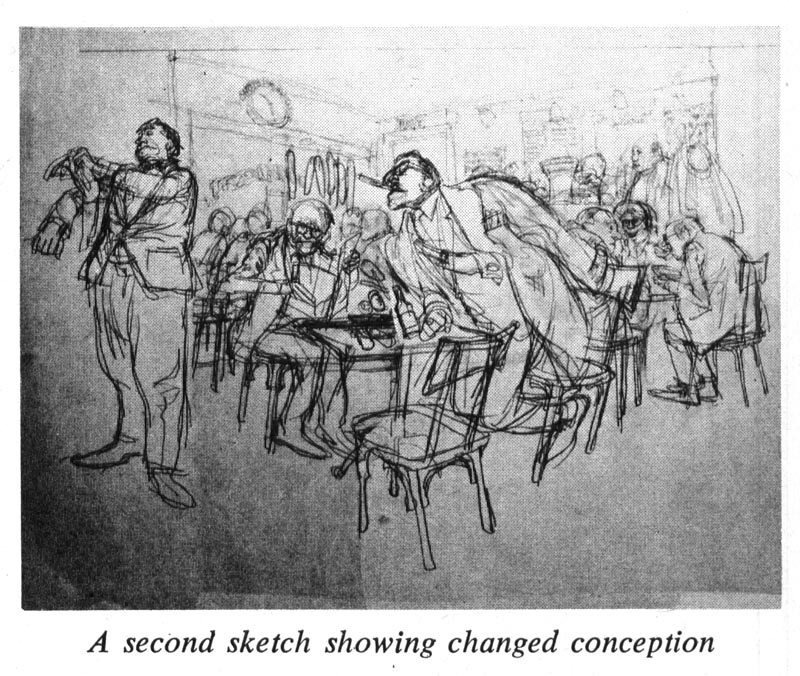
SK: If it hasn't been pinned down previously by the art director, I find that with this lack of limitation I'm capable of thinking out and considering the problem, and arriving at a composition that will tell the story best.
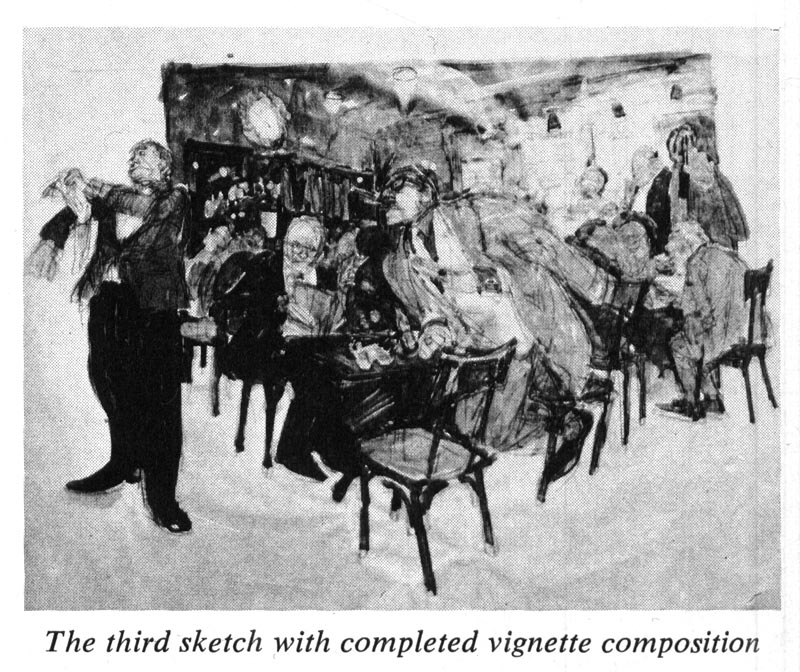
SK: That's it in a nutshell - the composition should not be considered as a clever shape, but as something that should be the method of telling the story.

HR: I see on your board a rough sketch for a humorous illustration. I can understand your doing this from memory. When you have to do a serious illustration, when do you decide to call the models in?
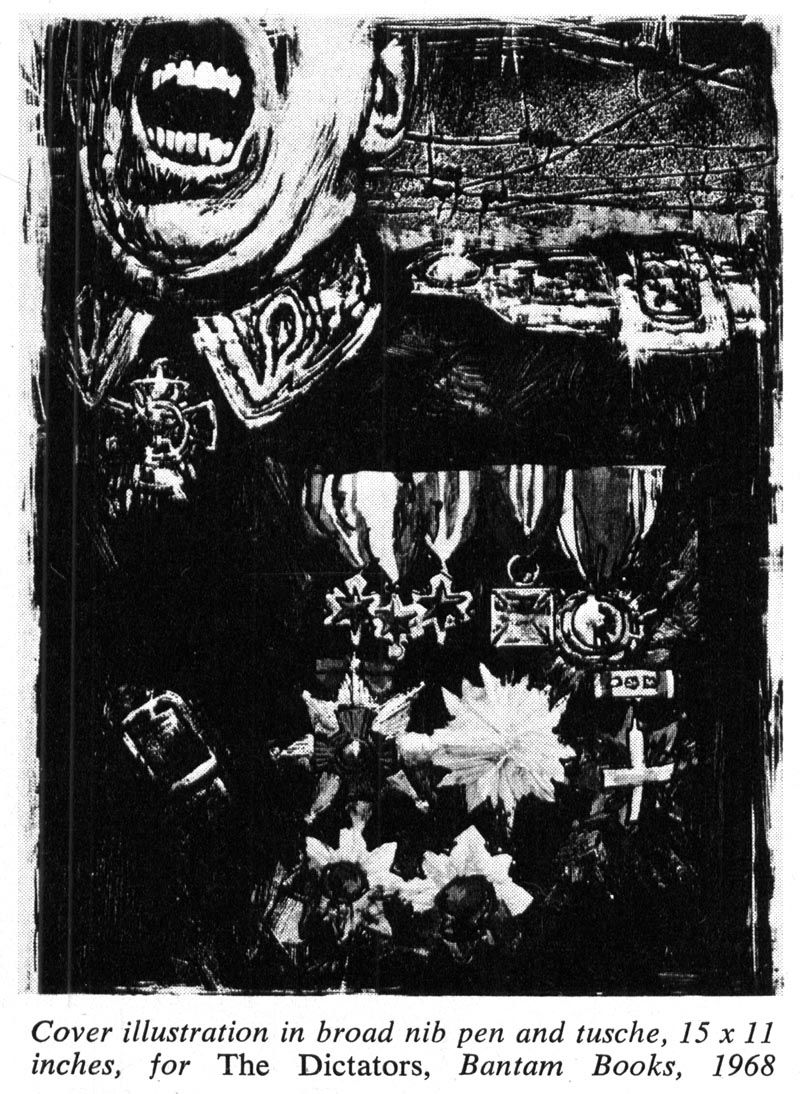
SK: There are times when I have a fairly complete idea in my mind of what the picture calls for, and I may even hire models for my "roughs" and take photographs, because the lighting is important, and there are things that the models give me that I might never have thought of.
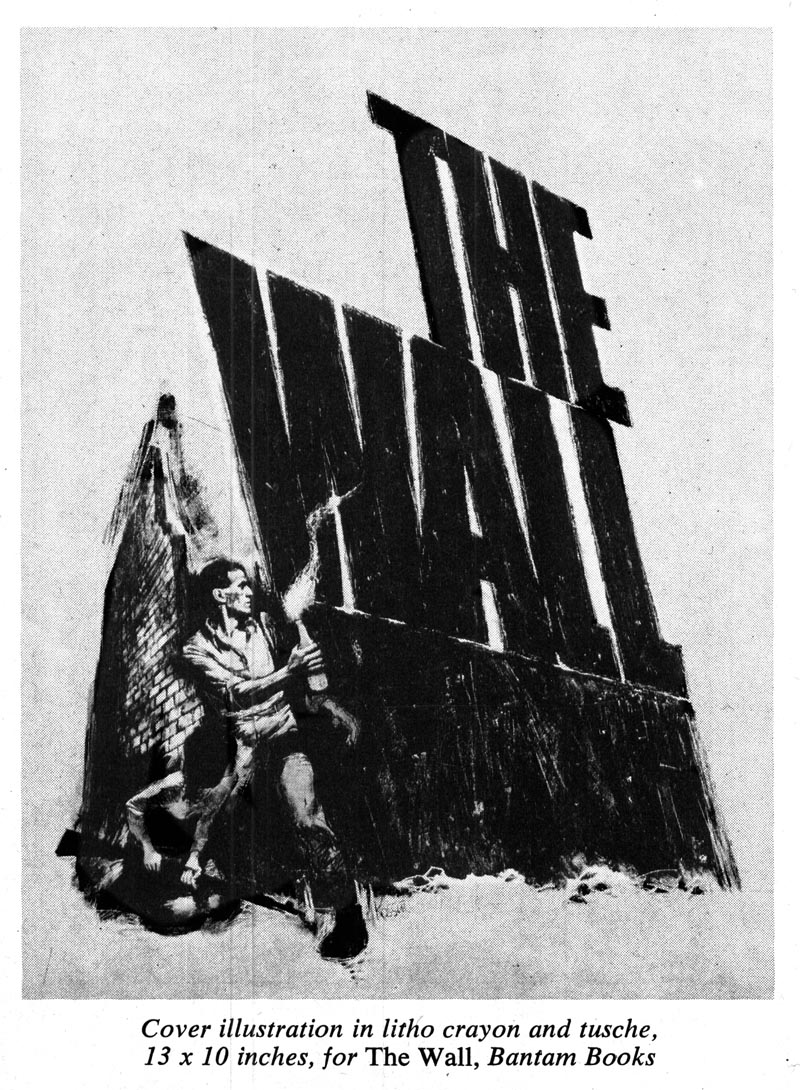
SK: If it's a situation in which I have to do some thinking and get an idea on paper, then I have to draw it first, get it approved, and then photograph my models to suit my original conception.
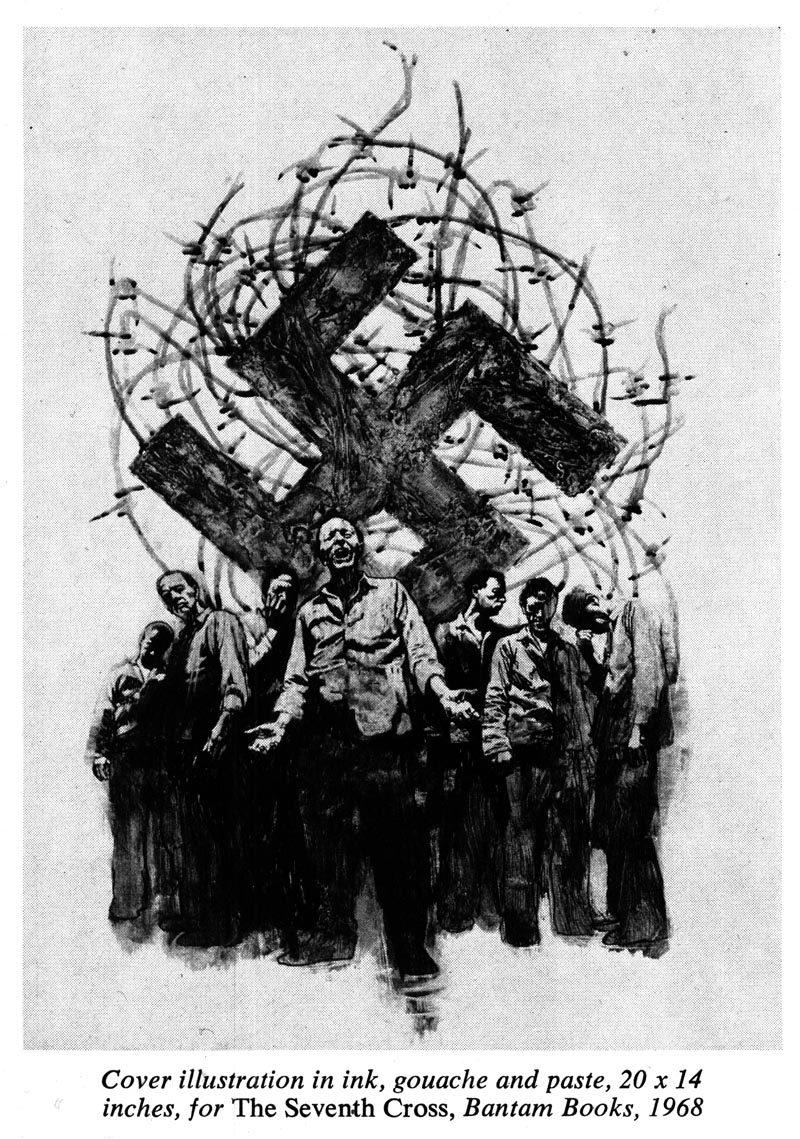
HR: In the past few weeks I've talked to people who know you and your work, and they all spoke glowingly of your great sense of composition, Where did you learn it?
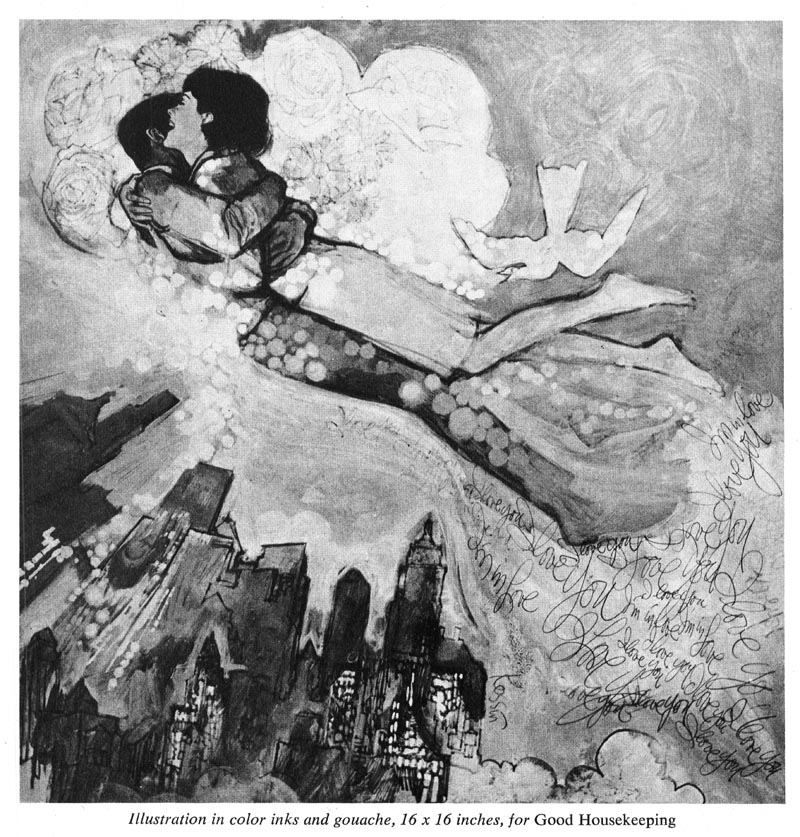
SK: I think it probably started originally with a study of the old masters - Rembrandt up into the Impressionists, especially Degas and Lautrec. But I think that eventually, in looking even at the things once studied, you see them in a new light because of a professional attitude.
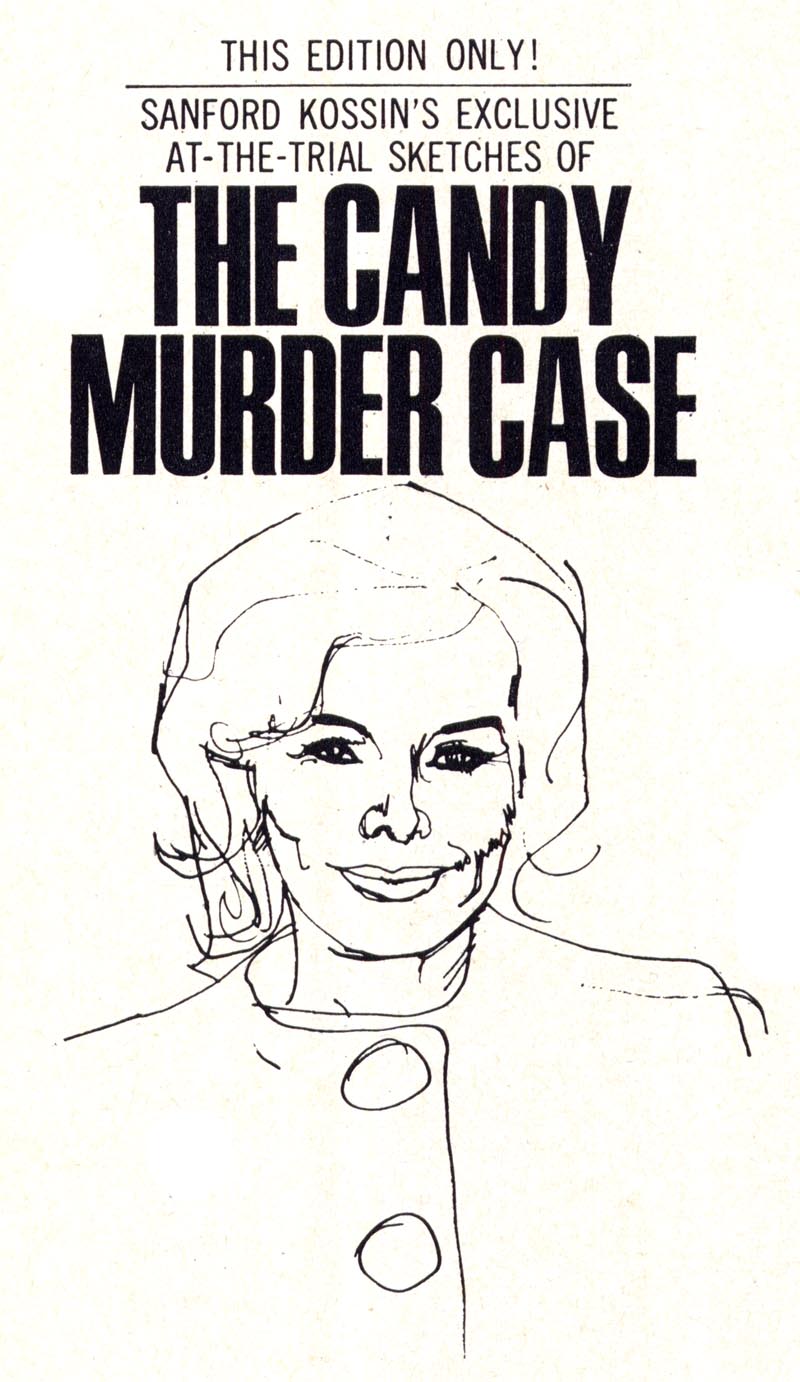
SK: It's a matter of having done it for so long. It's like a musician playing the same composition over and over again; he finally understands it so well that he begins to make his own variations. And this, I feel, is essentially what all artists go through.
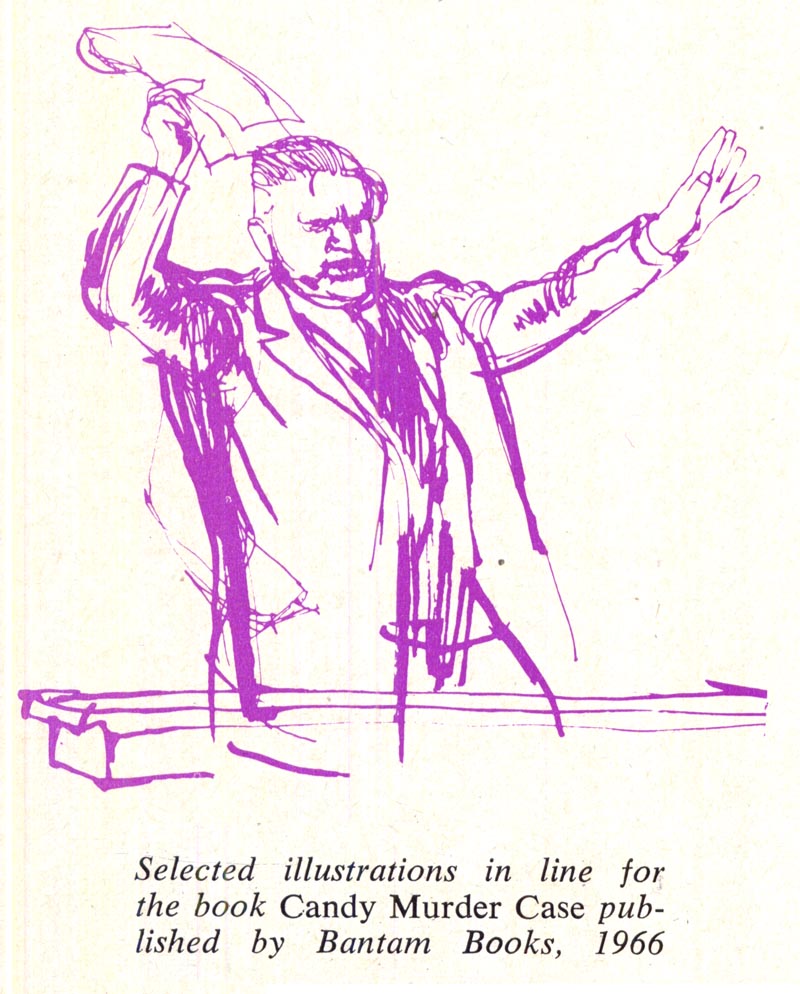
SK: We begin to edit our thinking, and we realize that all the formulas we learned, when we were very young and in art school, were not really formulas, but just places from which we could take off - to use as a basis for structure.
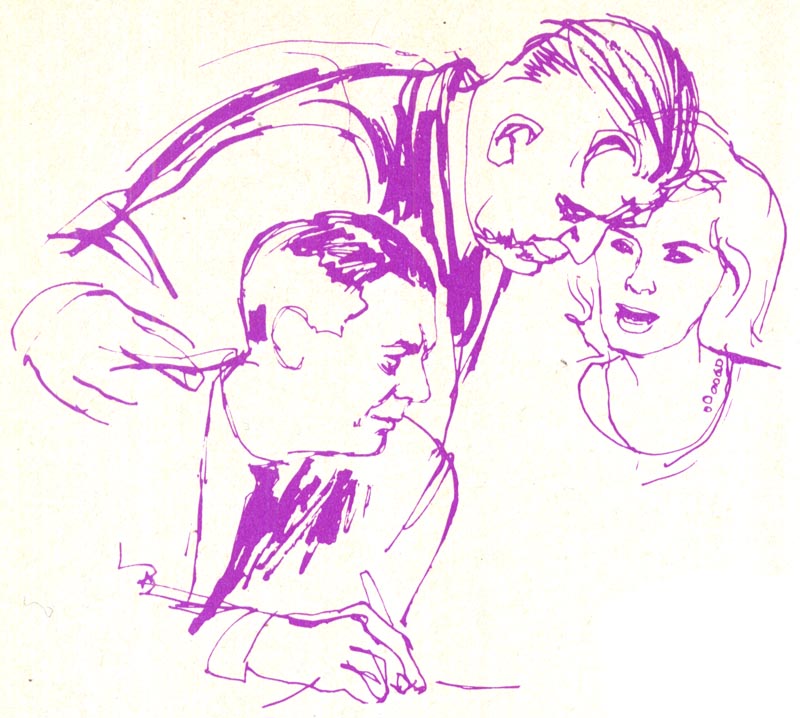
SK: It's like foundation stones for a building. The buildings that are now being constructed are quite foreign in relationship to the architecture of a hundred years ago, but they still have foundations, and they still have to have the same structural integrity that those designed many years ago had.
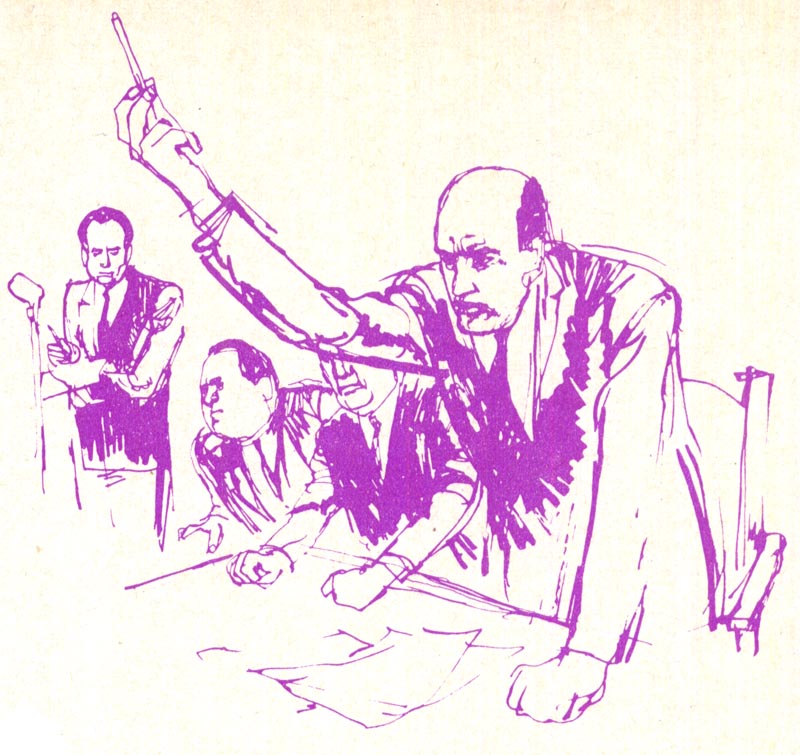
SK: I pay a lot of attention to the movement within the picture. This is different from an advertising layout, or a decorative composition where the elements are static and superficial; they're pleasant in terms of shape-making.
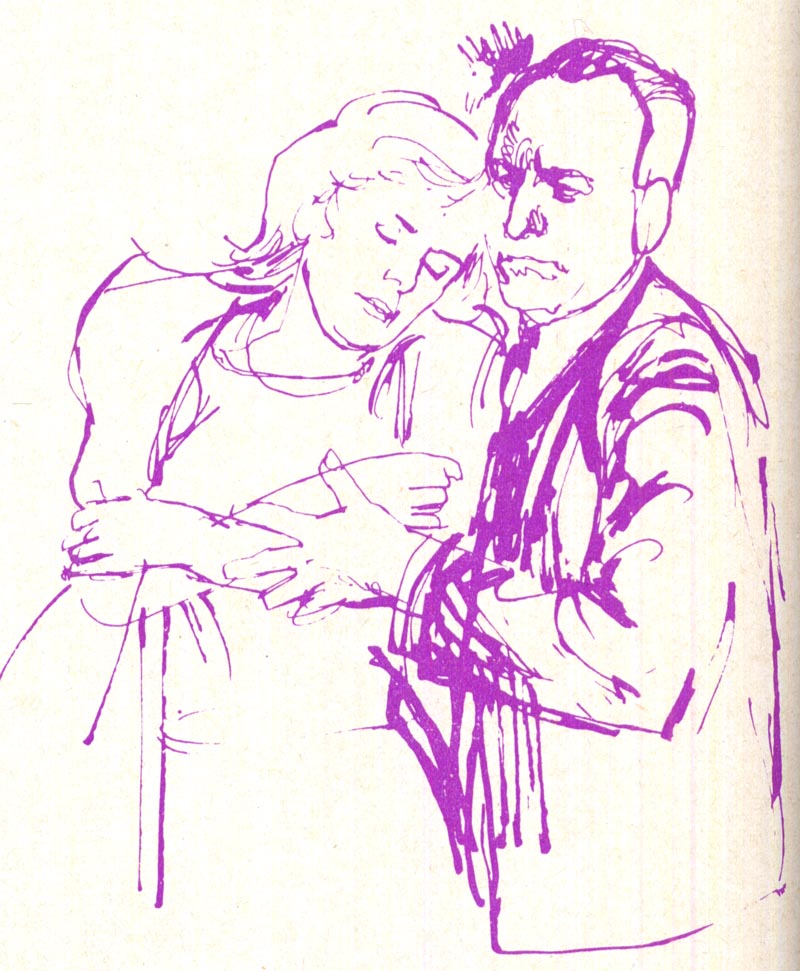
SK: I'm more concerned with what I call a traffic pattern within the picture itself - things move in, and out, and around.
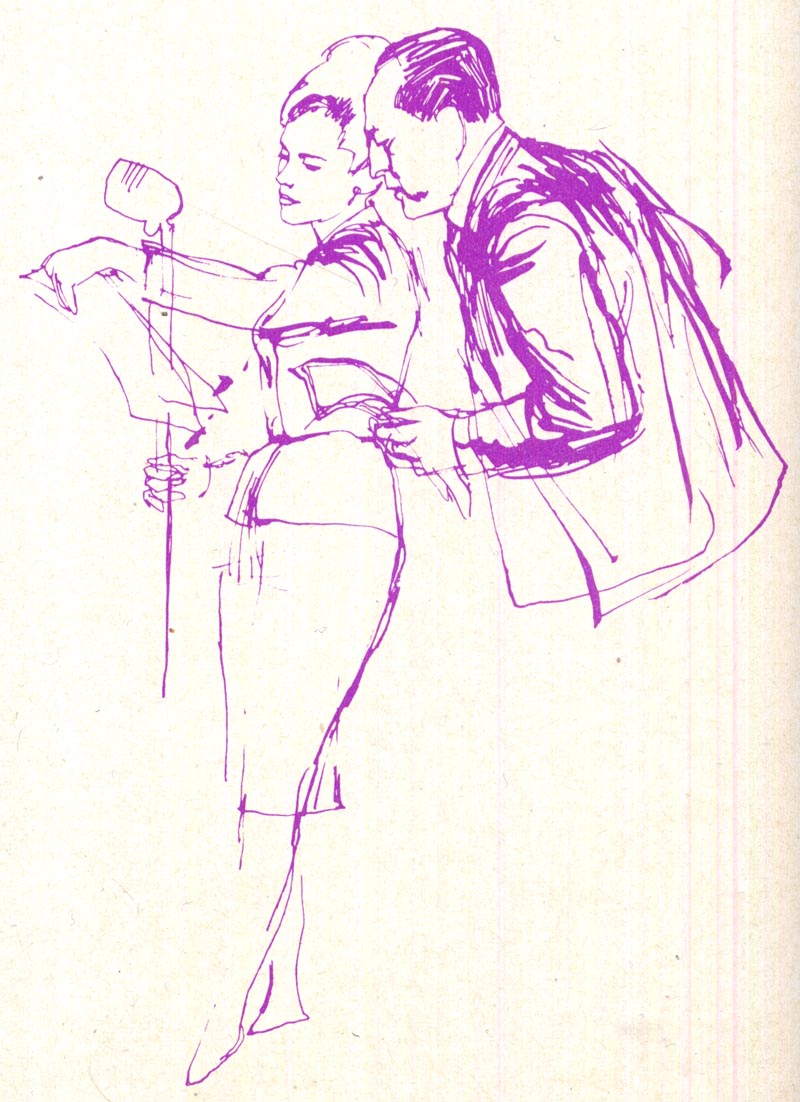
* Continued tomorrow
Great to read and see and wonder in amazement once more:
ReplyDeletebtw. that love couple in the sky struck me as Marc Chagall finding his way into the world of illustration;`)
only ONE comment so far? Over these great drawings and stories? DARN! that is too bad. Great things, these,
ReplyDeleteand some very useful insights alongside them
...probably too jaw dropping to comment: Had some difficulty as well, I must confess: the jaw down there on the keyboard wouldn't retract...so....
ReplyDeleteGreat Stuff!
ReplyDelete